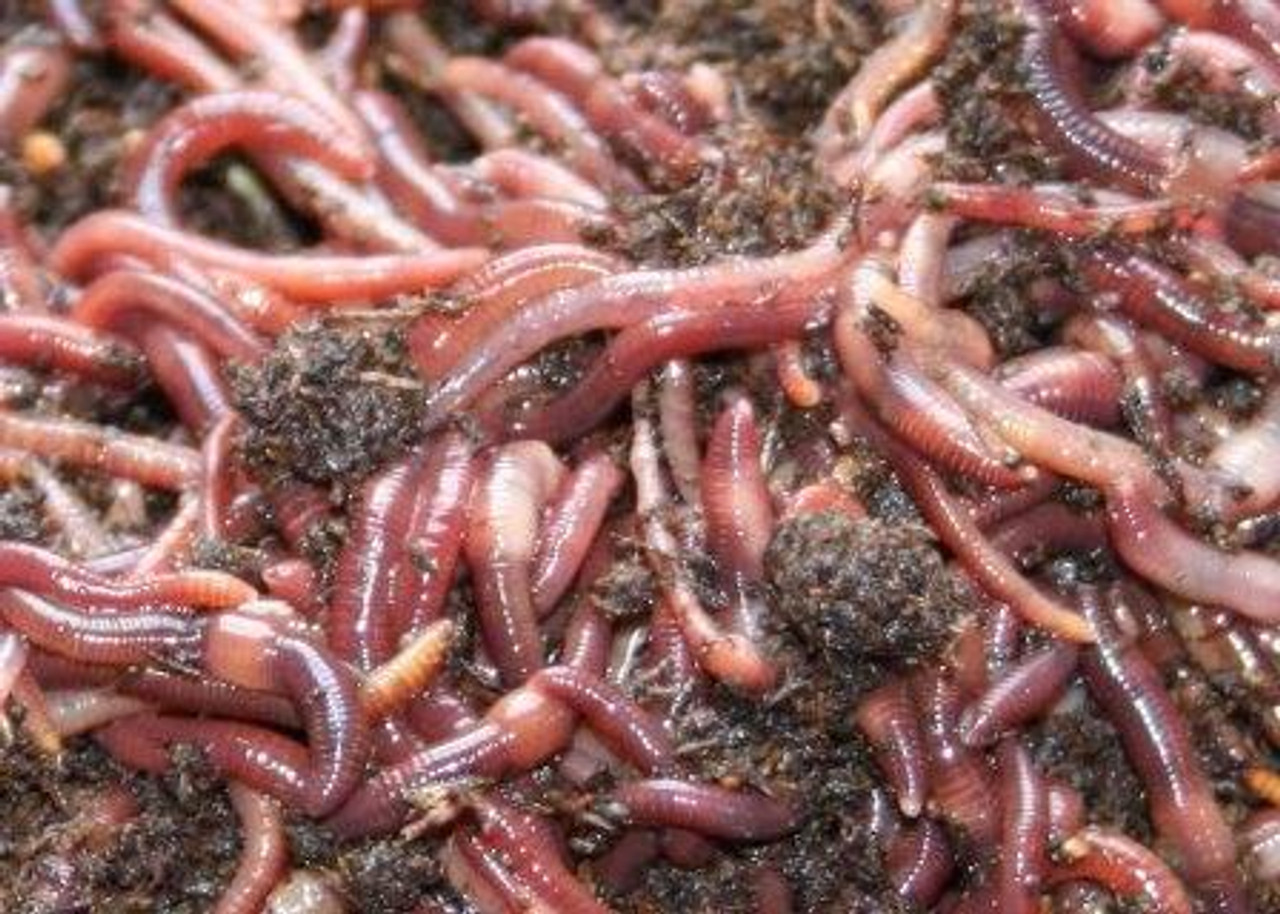Why Choose Red Wiggler Express for Fresh and Affordable Fishing Bait?
Why Choose Red Wiggler Express for Fresh and Affordable Fishing Bait?
Blog Article
Just How Red Wigglers Can Transform Your Composting Experience
The assimilation of red wigglers into composting practices supplies a transformative method to throw away administration and dirt enrichment. Recognizing the certain needs and advantages associated with preserving a prospering worm populace is crucial for optimizing their potential.
Benefits of Red Wigglers
Red wigglers, clinically referred to as Eisenia fetida, are a keystone of efficient composting systems as a result of their exceptional capability to break down raw material successfully. These worms stand out in transforming kitchen area scraps, backyard waste, and various other organic products into nutrient-rich compost, commonly described as worm spreadings. Lake Hickory Bait. This procedure not just decreases garbage dump waste yet additionally adds to sustainable horticulture methods
One of the primary advantages of red wigglers is their high reproduction rate, allowing them to occupy a composting setting promptly. This fast multiplication boosts decay rates, resulting in faster compost manufacturing. Furthermore, red wigglers prosper in a diverse series of problems, making them adaptable to various composting arrangements.

Establishing Your Worm Container
(Charlotte NC Worms For Sale)To develop a reliable worm bin for composting, careful interest should be provided to its design and atmosphere. A perfect worm bin should be built of materials that are long lasting yet permit necessary air movement, such as plastic or timber. The dimension of the bin can differ, yet a volume of about 1 square foot per pound of worms is an excellent beginning point.
Make certain that the bin has drain openings to stop water build-up, which can cause anaerobic problems detrimental to the worms. Furthermore, integrating air flow openings will certainly aid keep proper humidity levels and oxygen flow.
Next, it is vital to provide bed linens for the worms, which can consist of shredded paper, cardboard, or coconut coir. This bed linens not just offers a habitat for the worms yet likewise aids in moisture retention.
Setting the worm bin in an area that keeps a temperature series of 55-77 ° F(13-25 ° C) to enhance worm task. Prevent positioning the bin in direct sunshine or severe temperature levels. By adhering to these standards, you can develop a helpful setting for red wigglers, boosting the effectiveness of your composting process.
What to Feed Your Worms

(Lake Hickory Bait)Red wigglers especially delight in soft, wet foods like watermelon peels, cucumber peels, and banana peels. Nevertheless, it is important to prevent feeding them citrus fruits, onions, and garlic, as these can be detrimental to their health. Furthermore, prepared foods, milk products, and meat needs to be purely prevented, as they can result in smells and attract parasites.
Providing a constant feeding timetable will help maintain your worm population thriving while boosting the overall effectiveness of your composting initiatives. By understanding what to feed your worms, you lay the foundation for an effective and lasting composting experience.
Keeping a Healthy Environment
Developing a prospering composting atmosphere for red wigglers needs interest to their habitat, as it directly influences their health and wellness and productivity. The suitable environment ought to keep a well balanced dampness level, commonly in between 60-70%. Too much moisture can result in anaerobic conditions, while inadequate moisture may dry out the worms.

The bed linen material in the garden compost must be diverse and shredded, including products like cardboard, newspaper, and coconut coir. This not only offers a comfy atmosphere but additionally offers as a food source. Lake Hickory Bait. Frequently looking for odors or signs of parasites can assist recognize prospective problems prior to they escalate
Finally, preserving a well balanced pH level, ideally between 6 and 7, ensures a helpful environment for red wigglers, fostering their capacity to process organic issue successfully. By dealing with these factors, you can produce a lasting and effective composting environment.
Harvesting and Using Garden Compost
Harvesting compost from a worm container is a gratifying process that changes natural waste into nutrient-rich product for gardens and plants. When the composting cycle is full, commonly after 8-12 weeks, it's time to collect the vermicompost. The very first step entails separating the red wigglers from the completed compost. This can be done utilizing methods such as the "light" approach, where worms are drawn in to light and can be scooped far from the leading layers, or by moving the compost away of the container and including fresh bedding to the opposite, motivating the worms to move.
When the worms are gotten rid of, the remaining garden compost can be filtered to get rid of any type of larger particles or undecomposed product. This abundant garden compost can be used directly to garden beds, mixed right into potting dirt, or utilized as a top dressing for potted plants.
Conclusion
Including red wigglers into composting techniques substantially enhances the disintegration procedure and adds to the production of nutrient-rich vermicompost. The resulting worm spreadings improve dirt structure, fertility, and microbial activity, eventually advertising healthier plant development.
Report this page